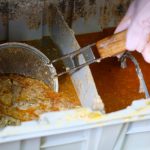How to Mange & Maintain Grease Traps in Restaurants

Understanding Grease Traps
Before diving into how to manage and maintain grease traps, it is important to understand what they are and how they work. Grease traps are plumbing devices that are installed in kitchens to capture FOG from wastewater before it enters the sewer system. The trap consists of a tank that separates the FOG from the water, allowing the lighter FOG to float to the top and the heavier solids to settle at the bottom. The clean water then flows out of the trap and into the sewer system.
Regular Cleaning and Maintenance
One of the most important aspects of managing grease traps is regular cleaning and maintenance. Grease traps should be cleaned on a regular schedule to prevent buildup of FOG and other debris. The frequency of cleaning will depend on the size of the grease trap and the amount of FOG generated by the kitchen, but generally, grease traps should be cleaned every 1-3 months.
It is recommended to hire a professional grease trap cleaning service to ensure that the trap is properly cleaned and maintained. These professionals have the necessary equipment and expertise to thoroughly clean the trap and dispose of the collected FOG in an environmentally-friendly manner. In addition to professional cleaning, restaurant staff should also monitor the grease trap regularly and remove any visible FOG or debris to prevent clogs and odors.
Proper Disposal of FOG
Proper disposal of FOG is essential for maintaining grease traps and preventing plumbing issues. FOG should never be poured down the drain, as it can solidify and cause blockages in the sewer system. Instead, FOG should be collected in a sealable container and disposed of in the trash. In some areas, there are regulations that require restaurants to collect and dispose of FOG properly, so it is important to check with local authorities to ensure compliance.
Installing Grease Trap Additives
Grease trap additives are products that can be added to grease traps to help break down FOG and prevent buildup. These additives are typically biological agents that contain enzymes and bacteria that digest FOG and convert it into harmless byproducts. While grease trap additives can be effective in preventing clogs and reducing odors, they should not be used as a replacement for regular cleaning and maintenance. It is important to use additives according to the manufacturer’s instructions and to monitor the performance of the grease trap regularly.
Educating Staff
Another important aspect of managing grease traps is educating restaurant staff on the importance of proper maintenance and disposal of FOG. Staff should be trained on how to monitor the grease trap, identify signs of buildup or clogs, and safely dispose of FOG. Providing staff with the knowledge and tools to properly manage grease traps will help prevent plumbing issues and ensure compliance with health and safety regulations.
Monitoring Performance
Regularly monitoring the performance of grease traps is essential for identifying potential issues before they become major problems. Restaurant owners and managers should keep track of the frequency of cleanings, the amount of FOG collected, and any signs of clogs or odors. Monitoring the performance of grease traps will help determine if additional cleaning or maintenance is needed and ensure that the trap is functioning properly.
Summary
Managing and maintaining grease traps in restaurants is essential for preventing costly plumbing issues and maintaining compliance with health and safety regulations. By understanding how grease traps work, regularly cleaning and maintaining the trap, properly disposing of FOG, installing grease trap additives, educating staff, and monitoring performance, restaurant owners and managers can effectively manage grease traps and keep their kitchens clean and sanitary. Properly managing grease traps is a critical aspect of kitchen maintenance that should not be overlooked.
Need Grease Trap Services in New Orleans, LA?
Hiring a professional cooking oil disposal service is a wise choice for individuals and businesses alike. These services offer efficient and convenient collection, environmentally responsible disposal, and compliance with regulations. Additionally, they contribute to recycling efforts and help reduce maintenance costs. By entrusting your used cooking oil to a professional service, you are not only doing your part in protecting the environment but also saving yourself time, effort, and potential headaches associated with improper disposal. And if you feel like you’re in need of a professional cooking oil disposal service, don’t hesitate to reach out and contact us today!
Categorised in: Grease Trap Cleaning, Grease Trap Service
